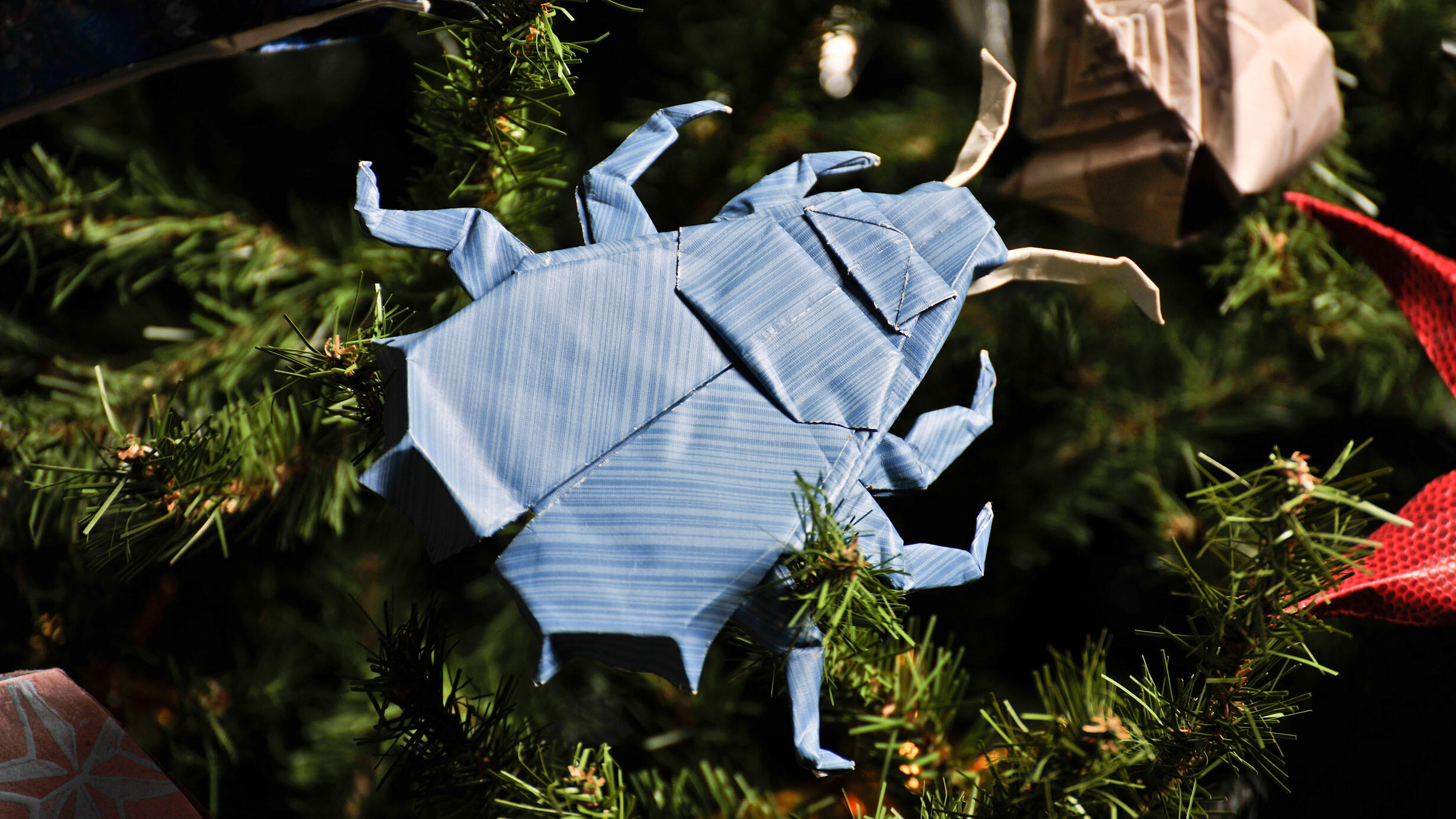Origami at the Museum
 D. Finnin/© AMNH
D. Finnin/© AMNH Partnering with the Origami Center of America, now OrigamiUSA, Gray created scores of paper insects, which wound up decorating a small holiday tree in one of the scientific offices. The tree was an instant hit.
Visit this year's Origami Holiday Tree.
Energized by the response, Gray and volunteers from the Origami Center of America re-created the tree the following year in the Theodore Roosevelt Memorial Hall, adding paper models representing various Museum displays and departments. The public was thrilled, and the Origami Holiday Tree became a beloved annual tradition, both for the Museum and for the thousands of visitors who see it each holiday season.
Origami is a frequent feature in the Museum halls and at public programs thanks to the volunteers from OrigamiUSA. Their organization conducts folding classes and sets up folding tables to introduce Museum visitors to the art of origami year-round.